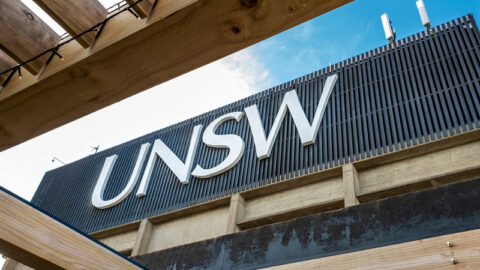by Paul Broad, CEO, Snowy Hydro
It’s hard to think of a time of greater upheaval in the way we produce electricity. For more than a decade, disagreement over climate and energy policies has stalled investment in new generation in Australia. Yet while the policy debate still rages, most companies in the energy market are operating under the assumption that, like it or not, we’re past the tipping point and are moving towards a low emissions future.
This is not to downplay the role that coal plays in the market. It is an important fuel source for electricity generation in Australia and will be for the foreseeable future. But as the country’s fleet of thermal power stations reach end of life, the market will make decisions about what will replace it.
Looking at the levelised cost of electricity (LCOE), which values the cost of energy generation across an asset’s lifetime, it is clear that in the energy market of the future the economics of coal-fired generation are no longer as attractive. The new entrant price for wind and solar, on an equivalent “firmed” basis, is now cheaper than new coal.
This trend is exacerbated as intermittency increases because it reduces the capacity factors of the coal plants. Capacity factor is a critical variable for the coal plants’ economics and the LCOE increases dramatically as capacity factor reduces.
Even with Australia’s vast, easy-to-extract reserves of thermal coal, the most modern, efficient coal-fired power plants cannot compete cost-effectively with utility-scale wind and solar. And given the LNG export boom and introduction of international net-back pricing, gas-fired generation is not a cost-effective solution for bulk energy either.
Furthermore, the prohibition of onshore gas exploration is one of the factors that greatly increases the cost of gas-fired generation, whether it is used for mid-merit or peaking duties.
Addressing intermittency of supply
The changes currently being felt across the market are profound, and both generators and retailers are trying to adapt. Over the last decade, we have witnessed thousand of megawatts of thermal ‘base load’ generation capacity withdrawn from the market. This trend is only set to accelerate, with the progressive closure of Australia’s aging fleet of coal-fired power stations.
This lost capacity is, for the most part, being replaced by intermittent sources of generation, with large-scale wind and solar stepping into the void. Intermittency is one of the major contributors to system instability and price volatility in the National Energy Market (NEM), which can move very quickly from a market high of $14,200 to a negative price at -$1000.
The Snowy Scheme operated by Snowy Hydro currently provides large amounts of dispatchable generation to address intermittency of energy supply. At times of peak energy demand, the Snowy Scheme keeps the lights on and puts downward pressure on energy prices.
The controllable dispatchability of hydro electricity is critical in meeting the demands of the current and future state of the NEM.
Snowy Hydro Limited, the largest hydro power generator in the NEM and a supplier of energy to more than one million customers through our retail brands Red Energy and Lumo, is about to embark on a major expansion of the Scheme through the Snowy 2.0 pumped hydro project.
Pumped hydro capitalises on price fluctuations and puts an effective cap on peak capacity prices. When demand is high, large-scale hydro can generate energy within minutes and when demand is low (or there is oversupply), Snowy Hydro can use the price differential to pump.
Snowy 2.0 is strategically located between the NEM’s two major load centres of Sydney and Melbourne and near the proposed renewable energy zones. Hydro generation is synchronous, producing inertia which helps stabilise the electrical network against oscillations associated with fluctuations in solar and
wind output.
Snowy 2.0’s large-scale storage is best placed to provide firming to address the intermittency of renewable generation and therefore underpins its reliability and financeability.
Snowy Hydro expects to continue signing offtake agreements with incoming renewable generation. This not only gives Snowy Hydro increased capacity but it helps de-risk new projects by giving them a ‘floor price’ for off-peak generation.
A recent example of this was the 20 year offtake agreement Snowy Hydro entered into with Equis’ 100MW solar plant being constructed in Tailem Bend, South Australia.
Cost-effective storage solutions
As a storage project, Snowy 2.0 is very cost effective and by far the cheapest form of storage on a megawatt hour basis. This ultimately means lower electricity bills for Australian consumers and businesses, in turn supporting the country’s international competitiveness.
The levelised cost of storage modelled in the Snowy 2.0 feasibility study was between $25–$35/MWh. Independent analysis has shown that if Snowy 2.0 is not built, the likely alternative is a combination of gas peaking plants and batteries at a cost of at least twice as much as our project.
The construction of the Snowy Mountains Scheme was one of the defining nation-building projects of the 20th century. It required long-term strategic thinking and vision – it wasn’t a quick fix.
The Snowy Scheme, consisting of nine power stations (including pumped storage at Tumut 3 Power Station and Jindabyne Pumping Station) and 16 major dams, collects, stores and releases water to users downstream and generates electricity on the way. It continues to be one of the most important sources of renewable energy in the NEM.
The Snowy Scheme acts like a giant battery that stores water (which is used to generate energy) and is always ready to smooth imbalances in supply and demand, and underpin the stability of
the network.
Snowy 2.0 would massively expand the scheme, supercharging our existing capabilities by increasing output by 2,000MW and providing large-scale storage of up to 350,000MWh (which is equivalent to 175 hours of energy storage).
Snowy 2.0’s feasibility study, completed in December 2017, concluded that the project was both financially and technically feasible. Even with conservative parameters, Snowy 2.0 has a strong business case and an internal rate of return that exceeds eight per cent.
Existing and future revenue opportunities
Independent energy market analysis conducted by Marsden Jacobs Associates confirmed that as intermittent generation increasingly enters the market, the demand for Snowy 2.0 (and the existing Scheme’s) energy market products will grow significantly. Snowy Hydro provides these products today and each presents a significant revenue opportunity:
- Capacity: The need to safeguard supply during periods of high energy demand has come into increasing focus. With the growth in peak demand, the supply/demand balance is more often under stress, particularly during summer. Snowy Hydro is already the leading supplier of energy price risk products in the NEM. These products (‘cap contracts’) insure retailers and customers against high price events, a regular feature of today’s energy market. Snowy 2.0 will create an additional 2,000MW of dispatchable supply, and so the number of cap contracts, and quite literally the generation capacity available to the market, will increase significantly.
- Storage: The basis of pumped storage is to pump water uphill during periods of low demand (low prices), and then use that water for electricity generation when the demand/supply balance signals the profitable release of water. The sheer scale of the storage capability offered by Snowy 2.0 is unmatched. Other technologies will have a role in small-scale energy storage, covering short intervals of time, but the NEM will need to adjust to cater for long periods of low generation. This includes wind “droughts” and cloudy periods which will result in below average generation for days, weeks or even months. Snowy 2.0 will maximise the value of renewable energy on a scale that alternative technologies cannot.
- Firming: With grid stability and energy reliability an increasingly urgent priority, Snowy Hydro will offer firming products which will provide an additional, complementary revenue stream. This is a hybrid of energy and capacity, and is most efficiently provided by large-scale hydro storage. Recognising the value of dispatchability and the need to firm-up the intermittency of variable renewable energy, the Energy Security Board recently recommended the creation of a reliability guarantee (as part of the broader National Energy Guarantee). Snowy 2.0 is ideally suited to provide this service.
- Ancillary services: The need for stabilising services, such as frequency and voltage control, will increase dramatically with the growth of intermittent generation. Known as ‘ancillary services’, these are critical to the reliability of electrical network. Snowy Hydro is already a major provider of these services and Snowy 2.0 will enhance that capability.
On the engineering front, the Snowy 2.0 project involves the construction of water supply tunnels from the existing Tantangara Reservoir (at an altitude of 1,230m), via an underground pump and storage cavern with outlet tunnels to the lower Talbingo Reservoir (at an altitude of 544m).
The sheer size, scale of the project and the geology of the mountains presents a number of engineering challenges, however, we are confident we can find solutions to these.
High water pressures, combined with long power waterways, require careful management of water pressure during normal and emergency operating conditions. Rigorous design of the facility surge tanks, turbines and control systems will be required.
Constructing the huge underground cavern for the power station, about one kilometre below ground, also presents engineering challenges. The cavern fit-out includes six main transformers, weighing up to 250 tonnes each. Simply transporting the transformers down into the cavern will be a major logistical exercise.
We have already mobilised a world-class team of electrical and civil engineers, environmental experts and project planners as we move from the planning phase to a final investment decision.
Early results from geotechnical investigations have been favourable; the terrain is rugged and challenging, but manageable. We are examining pumped hydro projects around the globe to ensure Snowy 2.0 incorporates world’s best practice and cutting-edge design.
Snowy 2.0 will rely on proven and reliable pumped hydro technology that does not degrade over time – like the Snowy Scheme, which has endured for more than 60 years. Through technological upgrades and maintenance, it is in fact operating better than new, with an additional 300MW of capacity from when the Scheme was constructed.
Large investments such as Snowy 2.0 rightly attract public scrutiny. At Snowy Hydro, we are confident the project can be built, that it stacks up commercially and technically, and that it will be a key part of the solution for the need to balance security and reliability, affordability and reduction of emissions.
The Snowy Scheme was the realisation of a grand vision. It turned inland the waters of the Snowy River, providing irrigation to Australia’s parched interior and creating vast new supplies of green energy. Snowy 2.0 is our chance to build on the legacy of the pioneers before us.


















